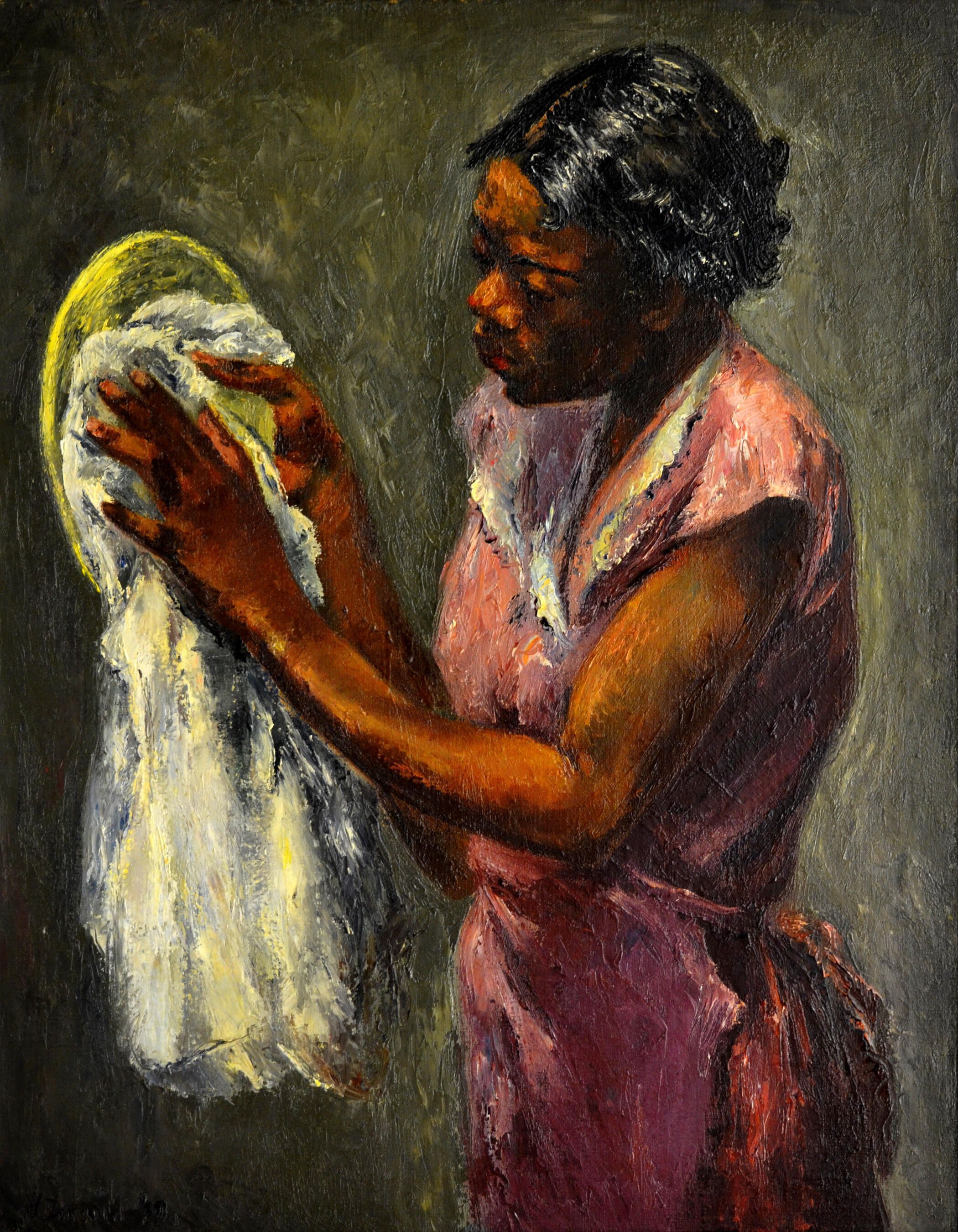Label
2022, Whose America?
30 Cents an Hour depicts an African American woman washing and drying dishes for a meager wage during the Great Depression. The painting was made in 1939 by an Italian artist Nicola Ziroli through the Works Progress Administration. The artist’s choice of realism, including the details of the fingers holding the cloth and the look of concentration on the woman’s face, allows the viewer to connect with her on an emotional level. In addition, the shallow picture plane and the angle at which Ziroli depicts the figure make one feel as if they are sitting right next to her. This work provides a glimpse into the realities faced by African American women during the 1930s.
Text by Jackson Nicodemus, Washburn studentLabel
Label from 2014.Art for Social Change:
This work depicts a black domestic worker who is, as the title indicates, receiving the minimum wage. In 1938 the Fair labor Standards Act established the first minimum wage of 25 cents. It was raised to 30 cents in 1939. The law also mandated the eight-hour workday and the forty-hour workweek.
Ziroli emigrated from Italy to the United States around 1914. He worked in Chicago for the Public Works of Art Project, a precursor to the WPA/FAP, and for the WPA/FAP from 1934 to c. 1939. He typically painted less topical subjects like still-lifes and street scenes. In 1936 he signed the call for the American Artists' Congress.Label
2024 post:
Throughout 2024, we're looking back at the 100 year history of art at the Mulvane. Read WU student Jackson Nicodemus's response to this 1939 painting: "30 Cents an Hour" depicts an African American woman washing and drying dishes for a meager wage during the Great Depression. The painting was made in 1939 by an Italian artist Nicola Ziroli through the Works Progress Administration. The artist’s choice of realism, including the details of the fingers holding the cloth and the look of concentration on the woman’s face, allows the viewer to connect with her on an emotional level. In addition, the shallow picture plane and the angle at which Ziroli depicts the figure make one feel as if they are sitting right next to her. This work provides a glimpse into the realities faced by African American women during the 1930s.
